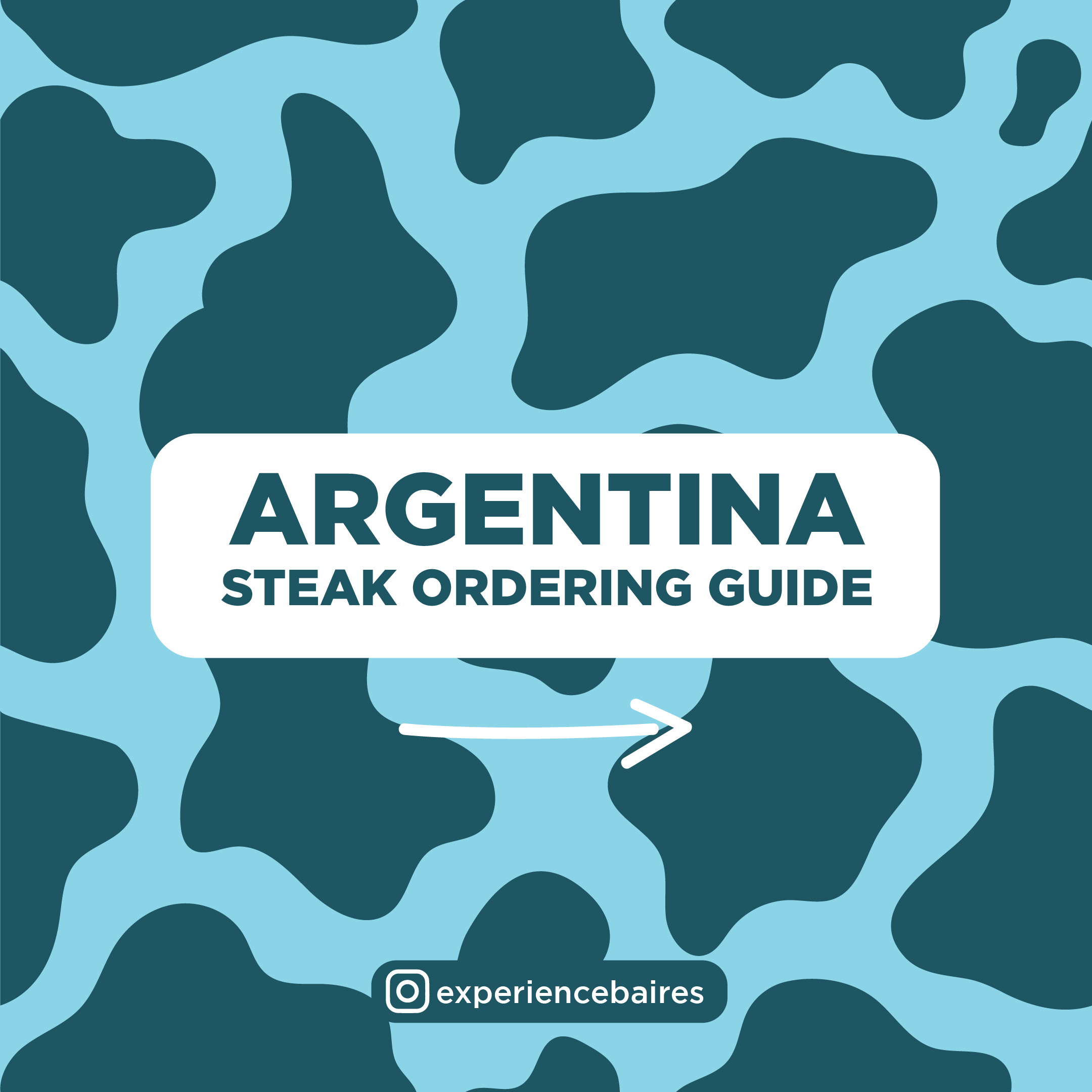How to order a steak in Argentina.
When you go to Argentina, you must try the meat (If you’re vegan or vegetarian, skip this article, but be sure people know you’re vegan/vegetarian if invited to a social event).
Here is what you need to know to try Argentina’s famous meat:
- How to find restaurants that serve the famous grilled meat (what Spanish words to look for) and have some idea of different meat cuts.
To find the restaurants that serve grilled meat, look for, or ask for, parrillas, which is the Spanish word for grill. But now that you’re in the restaurant and you look at the menu, and nothing just says “carne” or “bife.” There are a ton of different cuts for cow meat in Argentina. And pork isn’t just pork. It has different cuts, too. You really don’t need to learn all cuts, but you do need to learn which cuts are ones you might want to avoid and perhaps the pork cuts so you know when you’re getting pork or beef. Cuts, or rather, related options you may want to avoid include the entrañas (entrails), achuras (guts/organs), morcilla (a blood sausage that is common in asados), mondongo (stomach), and chinchulines (chitterlings). You are welcome to try these, of course, but it’s best to know what you’re getting when you order them. There are some other cuts that you may not want to try, but these are the most likely ones you’ll run into in restaurants. Pork cuts include bondiola, panceta (bacon), jamón, and matambre (though this one will likely be indicated with “de cerdo” as matambre is also the name of a cow meat cut). Now you should be able to know what you’re getting with confidence.
- The Spanish terms for how well-done you want your meat.
But wait, if you’re ordering some form of grilled cow meat, you’re going to want to specify how you want it done. Vuelta y vuelta (flipped twice over) is blue rare, muy jugoso (very juicy) is rare, jugoso (juicy) is medium-rare, al punto (at the point) is medium, cocido (cooked) is medium-well, and bien cocido (very cooked) is well-done. As you might guess, “al punto” is the point at which most Argentinians say is the ideal and thus, if you don’t specify, you’ll most likely get medium at a restaurant. The other possibility is you’ll get rare. This is less common, but possible, especially in the fancier restaurants. If you’re from the US, you probably want medium-rare, so you will most likely want to specify “jugoso.” Ahh, now you can relax knowing your delicious food will come soon.
- The cultural differences around grilling meat
While you may not run into a culture clash in a restaurant, you may go to an asado either at a friend’s or on some excursion. If you’re from the US, you probably have strong opinions on how you grill meat. Well, so do Argentinians. And it’s a very different philosophy. Argentinians slow cook their meat and, as a general rule, do not put sauces on it. Chimichurri is a thing as you can find it in any supermarket, but it’s not half as common in asados as one might think. They tend to believe good meat doesn’t need sauce. Also, expect the most basic of side dishes and a number of small servings of different cuts of meat. One can easily eat 5 different cuts of meat in an asado. Another good thing to know is going to an asado is a significant time commitment. It could take up to 3 hours to cook the meat, probably at least a good hour of eating it, and at least another hour of conversation. Many are social events first and foremost and people can stay at these events up to a very late hour. Asados on an excursion will probably take less time than at a friend’s house, but you shouldn’t expect a short affair.
Now you should be able to go to a restaurant and order meat exactly the way you want it, and go to an asado knowing what you’re getting yourself into.




Pingback: What not to do in Argentina? 🚫 - Argentine Don'ts - Experience Baires BLOG